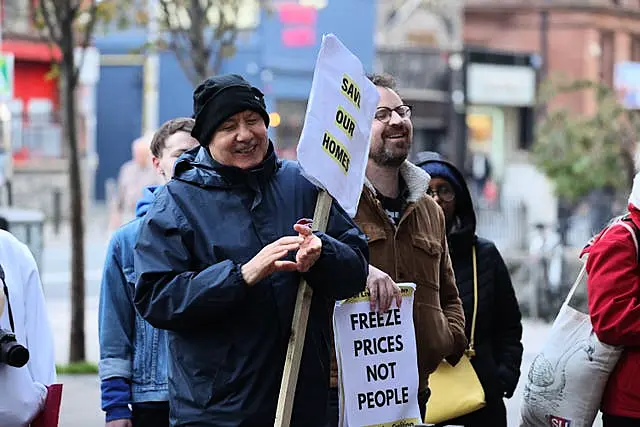A series of protests highlighting the cost-of-living crisis have taken place across Ireland.
Around 20 regional demonstrations were held on Saturday under the umbrella of the Cost of Living Coalition.
The group, made up of 30 organisations including trade unionists, student and pensioner bodies, and opposition political parties, is urging the Government to take radical action on the inflation and housing crises in Ireland.
Labour Party leader Ivana Bacik addressed the protest in Rathmines in Dublin.

“We want to see really radical action being taken to address the rising cost of living, soaring inflation rates and in particular the huge cost so many individuals and households are facing in rising rent and in rising mortgage prices too,” she said.
People Before Profit TD Paul Murphy, who was involved in organising the protest in Tallaght, south Dublin, said momentum behind the campaign was growing.
“The momentum is going to continue to grow because I think as the winter hits, pressure is really going to come on people and they will see that enough hasn’t been done to protect people,” he said.
“It is going to get cold. People are going to have to put on the heat, and then they’re going to realise just how much gas prices, oil prices, everything has increased.”

He added: “People are in real crisis situations. There’s loads of people, particularly older people, people on fixed incomes, just can’t afford to be heating their homes this winter.”
In September, thousands took to the streets of Dublin in a pre-budget protest aimed at ramping up pressure on the coalition government to take action.
The Government’s €11 billion budget package unveiled late in September comprised €6.9 billion in budgetary measures for next year, as well as a €4.1 billion package of one-off measures to help tackle the rising cost of living for individuals, families and households.
Speaking to reporters in Cork on Saturday, Taoiseach Micheál Martin said Budget 2023 represented a significant intervention, RTÉ reported.
However, he cautioned that cost-of-living measures had to be balanced, so they would not ultimately place further upward pressure on inflation.







